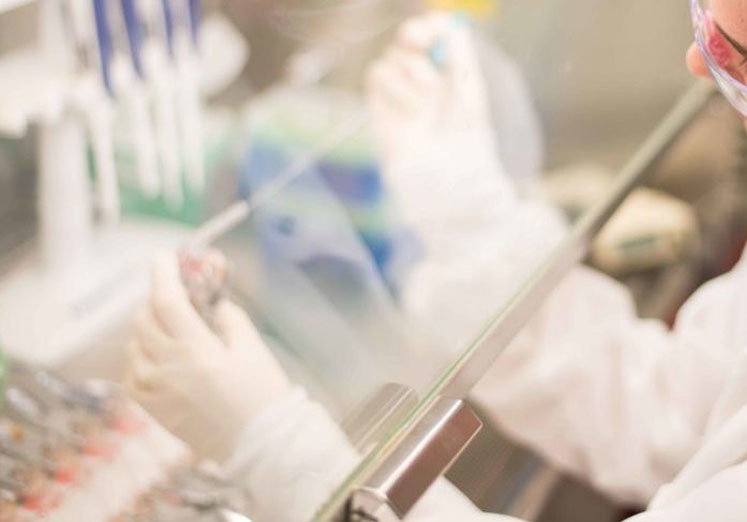In the dermal field of topicals, there is a considerable focus on treatments for psoriasis, atopic dermatitis and other conditions, of which semisolid and liquid formulations make up a large proportion.
Large pharmaceutical companies tend to be risk-averse and generally focus on entering clinical evaluation with a market-ready formulation for global registrations.
Conversely, small biotech or investor-backed companies often favour developing a prototype formulation that they can be evaluated in a clinical proof of concept (PoC) study.
If successful, however, there is often a need to do extensive bridging safety studies and further reformulation work to achieve a patient-friendly and approvable commercial product.
As a best case, this often requires an additional investment of time and money before their final Marketing Authorisation Application (MAA) or New Drug Application (NDA) can be filed.
The authors believe that the optimal route to success lies somewhere between these two approaches — wherein the formulation is optimised but not completely derisked and uses performance tests that include living preclinical skin models to mitigate potential failures throughout development.
Types of performance testing models
Performance testing models are used to differentiate and optimise formulations throughout the development process. For example, in vitro drug release testing (IVRT) involves the use of a non-rate-limiting synthetic membrane to support a semisolid topical formulation so that drug release from the formulation can be measured in a receptor solution beneath the membrane.
Essentially, this is a dissolution test for topicals. Historically, IVRT has been used to measure and optimise a drug’s thermodynamic activity; but, increasingly, regulators are requiring the use of validated IVRT as a quality control tool.
It’s important to understand that IVRT provides no mechanistic insight into how a drug is delivered into and across a biological barrier or skin … nor the influence of the formulation in this process. This is when ex vivo/in vitro methodology is utilised to understand these factors using in vitro penetration/permeation testing (IVPT) as a more economically viable tool prior to the clinic.
IVPT is a long-established and accepted “gold standard” method to assess the skin permeation (and penetration) of a topically formulated drug. It is used to understand the relative permeation of drugs and how formulation affects drug absorption across and into the skin, and can be used to optimise and compare different formulations.

Jon Lenn
Typically, this model uses healthy surgically excised skin and/or cadaver skin as the ability to obtain diseased skin is difficult if not impossible. One of the main limitations of this model is the inability to assess bioavailability or the compound’s ability to engage a local target in the skin.
Recently, there have been advances in the ability to obtain surgical skin and keep it alive in culture for several weeks, which has opened the field to develop ex vivo pharmacological models to explore bioavailability and local target engagement prior to clinical trials.
In vitro/ex vivo alternatives
Reconstituted human epidermis models: In the 1980s, researchers began to develop reconstituted human epidermis (RHE) skin models, which can include a dermal layer with collagen, fibroblasts and even melanocytes.
Commercially available examples include EPISKIN (L’Oréal) EpiDerm (MatTek Corporation) and ZenSkin (ZenBio). These models have quickly gained acceptability and contributed to the refinement, reduction and replacement (the 3Rs) of in vivo animal testing.
The primary advantage of these models is their high reproducibility, which allow formulations in development to be compared with controls of known irritancy or acute toxicity.
Most RHE models attempt to replicate “healthy” human skin, but new efforts are being explored to replicate skin disease(s) in a controlled, reproducible and qualifiable manner.
Most of these models are being used within academia, but commercially available disease models are also becoming increasingly accessible. One example, produced by MatTek, is a psoriasis RHE in which normal human epidermal keratinocytes and psoriatic fibroblasts harvested from psoriatic lesions are combined in an attempt to create a phenotypic model.
These reconstructed psoriatic tissues have the advantage of maintaining a psoriatic phenotype, as evidenced by increased basal cell proliferation, the expression of psoriasis-specific markers in the epidermis and some of the local response from keratinocytes.
However, these reconstructed tissues lack the local immune cells (T-cells, monocytes, etc.) that are often responsible for the well-described immune response.

Marc Brown
Another limitation of these RHE models are the increased permeability compared with normal healthy skin, which could lead to an overestimation of drug delivery and/or response.
These models also lack skin appendages such as sweat glands, sebaceous glands and hair follicles, which can influence drug absorption and limit the use for certain indications (alopecia, acne, hyperhidrosis).
Ex vivo skin disease models: There is a huge advantage in skin research in that there is direct access to the organ and large sections can be obtained from elective surgeries.
Today, scientists can keep this surgical skin alive in culture for up to a month, opening the possibility for the development of many different types of pharmacodynamic or disease models (such as infected eczema wherein infected skin elicits an immune response).
Using human ex vivo skin culture benefits from the inherent physical condition of the tissue. Despite lacking cell migration from the circulatory and lymphatic system into the dermis, ex vivo human skin contains resident immune cells (lymphocytes, dendritic cells and Langerhans cells).
Of these, the resident memory T cells (TRM) are known to be potent mediators against infection and autoimmune disease, which secrete inflammatory cytokines in ex vivo human skin.
Such responses to bacterial infection can be used to monitor both anti-inflammatory drug activity as well as antimicrobial therapy. Wounding of the tissue can be used to evaluate the re-epithelisation capabilities of formulations, for example, by using keratinocyte proliferation and identification markers.
As well as the resident immune cells, the existing cell population(s) in these explants can be stimulated to elicit biological responses. This allows different disease states, such as the release of chemokines associated with clinical psoriasis, to be analysed by Real-Time Quantitative Reverse Transcription Polymerase Chain Reaction (qRT-PCR).
Research has shown similar success with other inflammatory skin diseases (such as acute [Th2-mediated] and chronic atopic dermatitis [Th1-mediated, vitiligo and alopecia)], along with other conditions, such as wound healing, acne and other complex multimechanistic skin diseases.
Although pain and itch are elusive targets, recent developments suggest that coculturing neurons with ex vivo skin explants may extend the life of the skin culture to better understand the neuronal cross-talk in pain, itch and wound healing.

Infected skin models involve growing and culturing viable organisms on/in/under the skin, and accurately recovering and quantifying them after topical formulation treatment. Typical organisms used are P. acne, P. aeruginosa, dermatophytes, C. albicans and S. aureus (including MRSA).
In these models, the infection-causing organism is artificially introduced and grown under controlled conditions. The location of the infection within the skin is also controlled, so the position of the organism closely resembles the clinical presentation.
The antimicrobial effect of the drug or formulation is assessed using a direct indicator of cell viability, PCR, or direct viable counts.
Both infected skin models and modified zone of inhibition (ZOI) assays are currently limited to monocultures, meaning only one organism is included per replicate.
However, advances in analytical techniques (differential PCR techniques, for example), are leading to more complex biofilms comprising multiple organism types in an infection.
Conclusion
With the increasing requirements of the regulatory authorities, the development process of a new chemical entity (NCE) containing topical medicine is taking longer and costing more than ever before.
As a result, smaller biotech companies are increasingly taking the approach of showing PoC value and then outlicensing for the costlier and more time consuming pivotal later stage clinical trials.
In parallel, an alternative approach has evolved from the continued evolution of performance testing models combined with the recent increased understanding of immunology, tissue culture and pathway biology.
This methodology enables formulations to be fully optimised and then evaluated in translatable efficacy models, providing insights into clinical success. Ultimately this approach will only make developing topical products more efficient and increase their chances of success.
